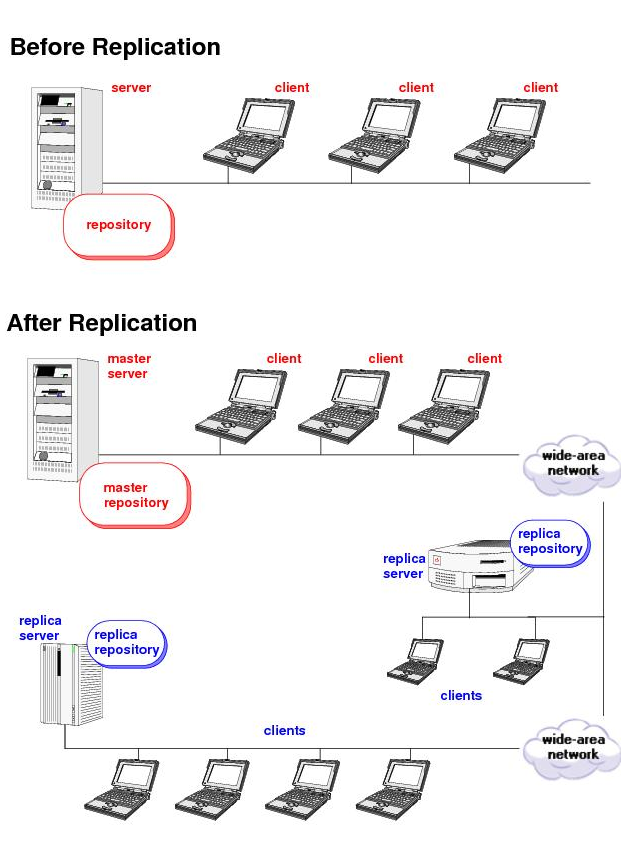One host in the network acts as the AccuRev server machine: it runs the AccuRev Server process and contains the AccuRev repository. In a replication scenario, this original host (or more precisely, this instance of the AccuRev Server process) is termed the master server.
One or more additional hosts in the network can act as replica servers. Each such host runs its own instance of the AccuRev Server process; likewise, each such host has its own copy of the AccuRev repository. The diagram below shows the servers in a replication scenario, along with various client machines.
We use the terms master repository and replica repository to distinguish the multiple repositories in a replication scenario. The master repository is always complete and up-to-date; all transactions (operations that change the repository) are handled by the master server and are logged in the master repository.
For more details on day-to-day operations involving master and replica repositories, see the sections starting with Using a Replica Server on page 48. First, we address licensing issues and describe the replica setup process.
